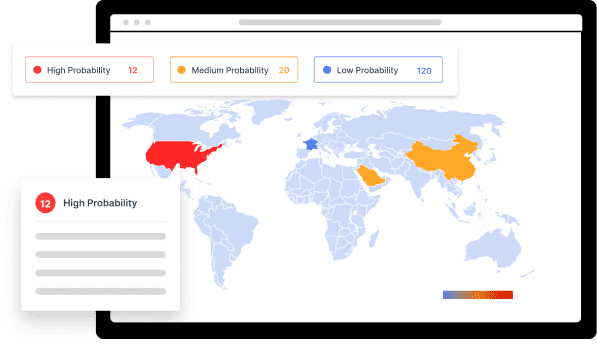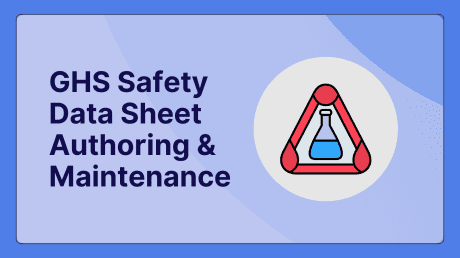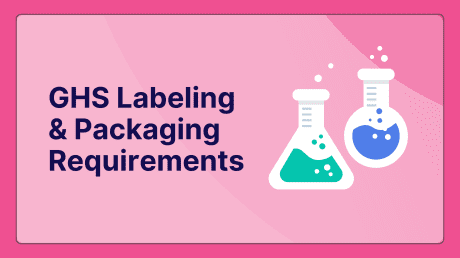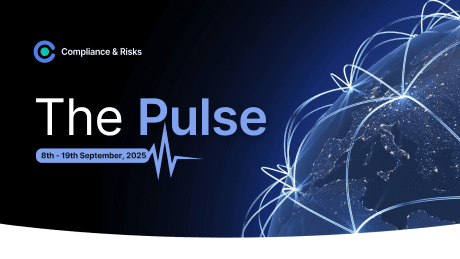
The Complete 2025 ESG & Sustainability Readiness Assessment Guide: Test Your Compliance Preparedness
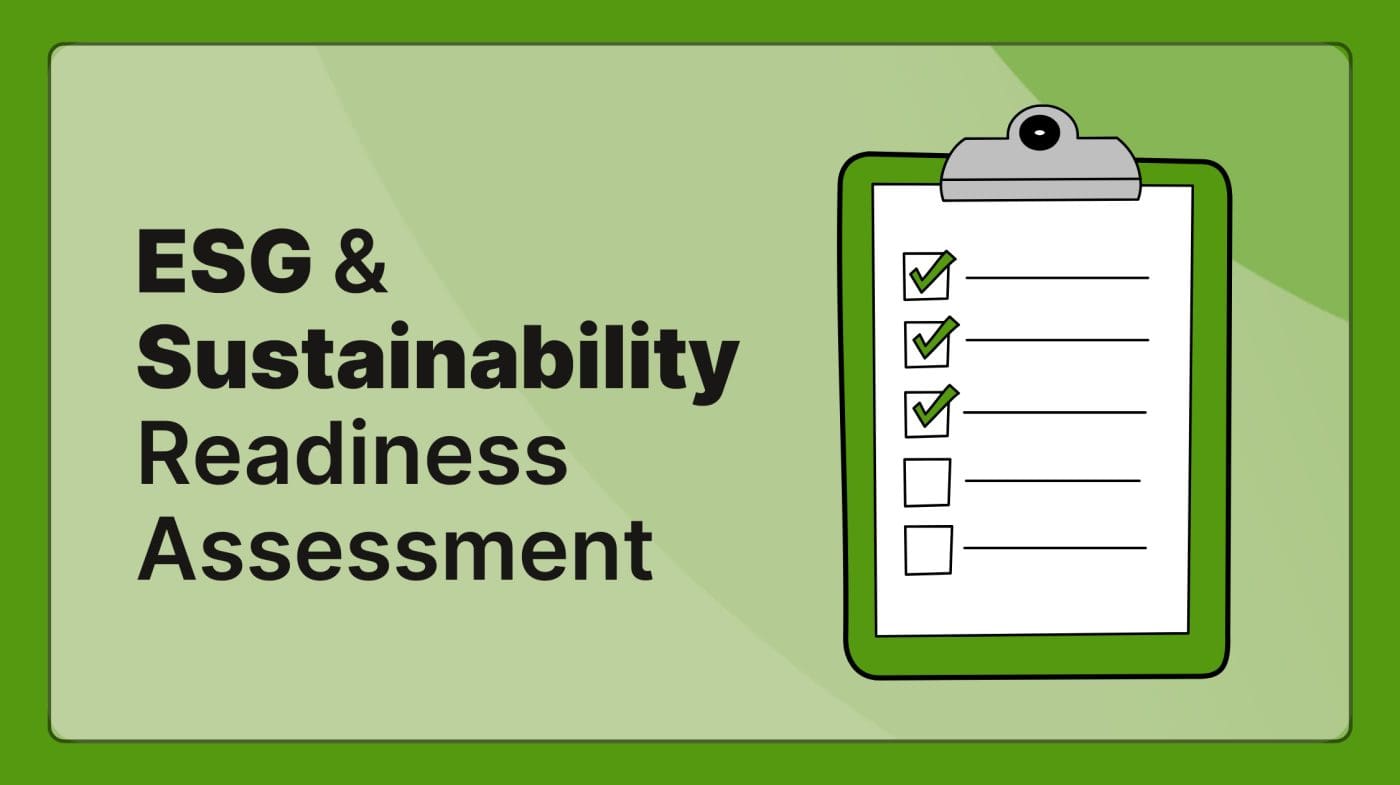
THIS BLOG WAS WRITTEN BY THE COMPLIANCE & RISKS MARKETING TEAM TO INFORM AND ENGAGE. HOWEVER, COMPLEX REGULATORY QUESTIONS REQUIRE SPECIALIST KNOWLEDGE. TO GET ACCURATE, EXPERT ANSWERS, PLEASE CLICK “ASK AN EXPERT.”
The ESG compliance landscape has transformed from voluntary reporting to legal mandate at lightning speed. With 98% of companies feeling unprepared for regulatory requirements such as the EU’s Corporate Sustainability Reporting Directive (CSRD), most compliance teams face a critical question: Where do we even start?
This comprehensive guide provides you with an interactive framework to assess your organization’s ESG compliance readiness across all major jurisdictions. You’ll discover exactly where your compliance gaps exist, understand the specific risks you face, and receive actionable recommendations to strengthen your ESG program before regulatory deadlines hit.
Whether you’re preparing for CSRD or other emerging ESG mandates, this assessment will transform uncertainty into a clear action plan.
Table of Contents
- The ESG Compliance Revolution: Why Traditional Risk Assessment Falls Short
- Understanding ESG Risk Assessment Fundamentals
- The Interactive ESG Readiness Assessment Framework
- ESG Readiness Assessment: Test Your Compliance Preparedness
- Interpreting Your ESG Readiness Score
- Building Your ESG Compliance Action Plan
- Advanced ESG Risk Management Strategies
- Technology Solutions for ESG Compliance Excellence
- Frequently Asked Questions
The ESG Compliance Revolution: Why Traditional Risk Assessment Falls Short
The regulatory environment for Environmental, Social, and Governance reporting has shifted from voluntary frameworks to legally binding requirements with severe penalties for non-compliance.
This regulatory tsunami creates unprecedented challenges for compliance teams accustomed to traditional financial and operational risk assessment. ESG compliance requires evaluating forward-looking risks, qualitative impacts, and complex value chain relationships that don’t fit neatly into conventional risk matrices.
The Critical Gaps in Current ESG Preparedness
Recent research reveals stark realities about corporate ESG readiness:
- Data Governance Crisis: 73% of companies lack the data infrastructure required for comprehensive ESG reporting, particularly for Scope 3 emissions tracking across complex supply networks.
- Jurisdictional Complexity: With major economies implementing different ESG frameworks simultaneously, 81% of multinational corporations struggle to align reporting across multiple jurisdictions without creating compliance gaps.
- Resource Allocation Challenges: Companies spend an average of 1,847 hours annually on ESG data collection and reporting, yet 42% of this effort fails to produce audit-ready documentation.
- Supply Chain Visibility: Only 18% of companies have full visibility into their Tier 2 and Tier 3 suppliers’ ESG practices, creating significant liability exposure under new due diligence requirements.
Why Generic Risk Assessment Tools Don’t Work for ESG
Traditional compliance risk assessment tools focus on well-defined, historical risks with clear probability calculations. ESG risks operate differently:
- Temporal Complexity: Climate risks unfold over decades, requiring scenario-based analysis rather than historical probability models.
- Interconnected Risk Factors: Environmental degradation affects social outcomes, which influence governance decisions, creating cascading risk scenarios traditional matrices can’t capture.
- Stakeholder Expectations: ESG risks include reputational and investor relations factors that don’t translate directly to financial impact calculations.
- Regulatory Evolution: ESG requirements change rapidly as frameworks mature, requiring dynamic risk assessment rather than static compliance checklists.
Understanding ESG Risk Assessment Fundamentals
Effective ESG risk assessment requires a fundamentally different approach than traditional compliance evaluation. While conventional risk matrices measure likelihood versus impact using historical data, ESG assessment must account for evolving regulatory landscapes, stakeholder expectations, and long-term sustainability trends.
The Three Pillars of ESG Risk Assessment
- Environmental Risk Framework: Encompasses climate-related physical and transition risks, including carbon emissions reporting, biodiversity impact assessment, water usage monitoring, and circular economy compliance. Key regulatory drivers include the Task Force on Climate-related Financial Disclosures (TCFD), Science-Based Targets initiative (SBTi), and emerging biodiversity frameworks.
- Social Risk Evaluation: Covers human rights due diligence, labor practices throughout the value chain, community impact assessment, and consumer protection measures. Critical considerations include modern slavery compliance, diversity and inclusion reporting, and supply chain labor standards verification.
- Governance Risk Analysis: Addresses board composition and diversity, executive compensation alignment with ESG goals, anti-corruption programs, data privacy protection, and stakeholder engagement processes. Regulatory focus areas include beneficial ownership transparency, cybersecurity governance, and ESG-linked compensation disclosure.
ESG Risk Scoring Methodology
Unlike traditional risk assessment that relies primarily on quantitative probability calculations, ESG risk scoring requires a hybrid approach combining quantitative metrics with qualitative assessments:
- Quantitative Components: Direct measurements including carbon emissions (Scope 1, 2, and 3), water usage, waste generation, energy consumption, diversity metrics, safety incidents, and financial performance indicators.
- Qualitative Factors: Regulatory compliance posture, stakeholder satisfaction levels, reputational risk exposure, management system maturity, and third-party ESG ratings alignment.
- Forward-Looking Indicators: Scenario analysis results, regulatory pipeline assessment, technology transition readiness, and market trend adaptation capabilities.
Key Performance Indicators for ESG Readiness
Successful ESG compliance programs track specific readiness indicators across each pillar:
- Data Quality Metrics: Percentage of ESG data independently verified, frequency of data collection updates, completeness of supply chain ESG information, and automation level of data gathering processes.
- Regulatory Alignment Indicators: Coverage of applicable ESG regulations, timeliness of regulatory updates integration, completeness of required disclosures, and audit readiness status.
- Stakeholder Engagement Measures: Frequency and quality of investor ESG communications, employee ESG program awareness levels, customer sustainability perception metrics, and community impact assessment completeness.
The Interactive ESG Readiness Assessment Framework
Our comprehensive ESG readiness assessment evaluates your organization across six critical dimensions that determine compliance preparedness and regulatory risk exposure. This framework addresses the specific challenges identified in current ESG compliance gaps while providing actionable insights for improvement.
Assessment Dimension 1: Data Infrastructure and Management
- Data Collection Systems: Evaluation of automated data gathering capabilities, integration between ESG and enterprise systems, and real-time monitoring capabilities for key ESG metrics.
- Data Quality Controls: Assessment of verification procedures, third-party validation processes, audit trails for ESG data, and error detection and correction mechanisms.
- Supply Chain Data Visibility: Analysis of supplier ESG data collection processes, Tier 2 and Tier 3 supplier monitoring capabilities, and supply chain risk assessment integration.
Assessment Dimension 2: Regulatory Compliance Coverage
- Current Regulation Alignment: Comprehensive review of compliance with applicable ESG regulations including CSRD, SFDR, Taxonomy Regulation, and jurisdiction-specific requirements.
- Regulatory Pipeline Preparedness: Assessment of readiness for upcoming regulatory requirements, monitoring systems for regulatory changes, and impact assessment capabilities for new requirements.
- Cross-Jurisdictional Coordination: Evaluation of processes for managing multiple regulatory frameworks simultaneously and ensuring consistency across different reporting requirements.
Assessment Dimension 3: Risk Management Integration
- ESG Risk Identification: Assessment of systematic approaches to identifying and cataloging ESG risks across the organization and value chain.
- Risk Quantification Methodologies: Evaluation of approaches for measuring and prioritizing ESG risks, including scenario analysis capabilities and stress testing procedures.
- Risk Mitigation Programs: Analysis of existing programs for addressing identified ESG risks and their effectiveness in reducing organizational exposure.
Assessment Dimension 4: Reporting and Disclosure Capabilities
- Internal Reporting Systems: Assessment of management reporting processes, board-level ESG oversight mechanisms, and integration with existing governance structures.
- External Disclosure Preparation: Evaluation of processes for preparing public ESG disclosures, ensuring accuracy and completeness of reported information, and managing disclosure timelines.
- Stakeholder Communication: Analysis of ESG communication strategies, stakeholder engagement processes, and feedback integration mechanisms.
Assessment Dimension 5: Organizational Readiness
- Leadership Commitment: Assessment of executive and board-level support for ESG initiatives, resource allocation for ESG compliance, and integration of ESG considerations into strategic planning.
- Team Capabilities: Evaluation of ESG expertise within the organization, training programs for relevant staff, and plans for capability development.
- Change Management: Analysis of organizational change management capabilities for implementing ESG compliance programs and managing stakeholder expectations during transitions.
Assessment Dimension 6: Technology and Systems Integration
- ESG Technology Platform: Assessment of current technology solutions for ESG data management, reporting capabilities, and integration with existing enterprise systems.
- Automation Capabilities: Evaluation of automated data collection, processing, and reporting capabilities to reduce manual effort and improve accuracy.
- Regulatory Monitoring Systems: Analysis of capabilities for tracking regulatory changes, assessing impact, and updating compliance programs accordingly.
ESG Readiness Assessment: Test Your Compliance Preparedness
This interactive assessment will evaluate your organization’s ESG readiness across the six critical dimensions outlined above. Each question is designed to identify specific gaps in your current ESG compliance program while providing insights into priority areas for improvement.
Instructions: Rate each statement on a scale of 1-5, where:
- 1 = Strongly Disagree / Not in Place
- 2 = Disagree / Limited Implementation
- 3 = Neutral / Partially in Place
- 4 = Agree / Well Implemented
- 5 = Strongly Agree / Fully Implemented
Data Infrastructure and Management
- Our organization has automated systems for collecting ESG data across all business units and geographic locations.
- We have established data quality controls including verification procedures and audit trails for all ESG metrics.
- Our ESG data collection covers Tier 2 and Tier 3 suppliers with regular monitoring and updates.
- We maintain real-time dashboards showing progress against ESG targets and regulatory requirements.
- Our ESG data is independently verified by third-party auditors on a regular basis.
Regulatory Compliance Coverage
- We have comprehensive mapping of all applicable ESG regulations across our operating jurisdictions.
- Our organization monitors regulatory pipelines and upcoming ESG requirements with defined impact assessment processes.
- We maintain consistent reporting across multiple ESG frameworks without creating compliance gaps.
- Our ESG disclosures are audit-ready and meet all current regulatory requirements.
- We have established processes for rapidly adapting to new ESG regulatory requirements.
Risk Management Integration
- ESG risks are formally integrated into our enterprise risk management framework.
- We conduct regular scenario analysis and stress testing for climate-related and other ESG risks.
- Our organization has systematic processes for identifying emerging ESG risks across the value chain.
- We quantify ESG risks using both financial and non-financial metrics with clear escalation procedures.
- Our ESG risk mitigation programs are measurably effective in reducing organizational exposure.
Reporting and Disclosure Capabilities
- Our board receives regular, comprehensive reports on ESG performance and compliance status.
- We have established processes for preparing accurate, timely public ESG disclosures across all required frameworks.
- Our ESG communications strategy effectively engages all key stakeholder groups.
- We integrate stakeholder feedback into continuous improvement of our ESG programs.
- Our ESG reporting meets the highest standards for transparency and comparability.
Organizational Readiness
- ESG considerations are integrated into our strategic planning and decision-making processes.
- Our leadership team demonstrates strong commitment to ESG excellence through resource allocation and accountability.
- We have sufficient ESG expertise within our organization or through external partnerships.
- Our employees understand their roles in achieving ESG objectives and receive relevant training.
- We have proven change management capabilities for implementing complex ESG initiatives.
Technology and Systems Integration
- Our ESG technology platform provides comprehensive functionality for data management, analysis, and reporting.
- We have automated significant portions of our ESG data collection and processing workflows.
- Our systems provide real-time alerts for regulatory changes that could impact our ESG compliance.
- Our ESG technology integrates seamlessly with existing enterprise systems and workflows.
- We leverage advanced analytics and AI capabilities to enhance ESG decision-making and risk management.
Interpreting Your ESG Readiness Score
Calculate your total score by adding all responses (maximum possible: 150 points). Your score indicates your organization’s current ESG readiness level and helps identify priority areas for improvement.
Score Interpretation
- 135-150 Points: ESG Leader Your organization demonstrates exceptional ESG readiness across all dimensions. You’re well-positioned to meet current and emerging regulatory requirements while leveraging ESG as a competitive advantage. Focus on continuous improvement and thought leadership in emerging ESG areas.
- 120-134 Points: ESG Achiever Your organization has strong ESG foundations with room for targeted improvements. You’re likely compliant with current requirements but may face challenges with emerging regulations. Prioritize strengthening weaker dimensions identified in your assessment.
- 105-119 Points: ESG Developer Your organization has basic ESG capabilities but significant gaps remain. You face moderate to high compliance risk and should prioritize building comprehensive ESG infrastructure. Consider engaging ESG compliance experts to accelerate your progress.
- 90-104 Points: ESG Beginner Your organization has limited ESG readiness and faces high compliance risk. Immediate action is required to avoid regulatory penalties and reputational damage. Focus on foundational elements including data infrastructure, regulatory mapping, and leadership commitment.
- Below 90 Points: ESG Crisis Your organization faces critical ESG compliance gaps that require urgent attention. You’re at high risk for regulatory violations, stakeholder backlash, and competitive disadvantage. Immediate executive intervention and comprehensive ESG program development are essential.
Dimension Analysis
Review your scores for each assessment dimension to identify specific areas requiring attention:
- Data Infrastructure (Questions 1-5): Low scores indicate urgent need for ESG data management improvements.
- Regulatory Compliance (Questions 6-10): Gaps here suggest high regulatory risk requiring immediate attention.
- Risk Management (Questions 11-15): Weaknesses could lead to inadequate preparation for ESG-related business disruptions.
- Reporting Capabilities (Questions 16-20): Deficiencies may result in stakeholder dissatisfaction and regulatory issues.
- Organizational Readiness (Questions 21-25): Low scores suggest cultural and structural barriers to ESG success.
- Technology Integration (Questions 26-30): Gaps indicate need for ESG technology platform improvements.
Building Your ESG Compliance Action Plan
Based on your assessment results, develop a prioritized action plan addressing your organization’s specific ESG readiness gaps. This section provides detailed guidance for improvement initiatives across each assessment dimension.
High-Priority Actions (Scores Below 3.0)
Organizations with dimension scores below 3.0 should treat these as high-priority areas requiring immediate attention and significant resource allocation.
Data Infrastructure Improvements:
- Implement automated ESG data collection systems
- Establish data governance policies and procedures
- Develop supplier ESG data requirements and monitoring processes
- Create ESG data verification and audit procedures
Regulatory Compliance Enhancement:
- Conduct comprehensive ESG regulatory mapping across all jurisdictions
- Implement regulatory monitoring and impact assessment processes
- Develop compliance tracking and reporting systems
- Establish legal review procedures for ESG disclosures
Risk Management Integration:
- Integrate ESG risks into enterprise risk management framework
- Develop ESG risk identification and assessment methodologies
- Implement scenario analysis and stress testing capabilities
- Create ESG risk mitigation and monitoring programs
Medium-Priority Actions (Scores 3.0-3.9)
Dimension scores in this range indicate solid foundations requiring targeted improvements to achieve ESG excellence.
Reporting and Disclosure Enhancement:
- Upgrade ESG reporting systems and processes
- Implement stakeholder engagement and feedback mechanisms
- Develop integrated ESG communication strategies
- Establish external ESG disclosure quality assurance procedures
Organizational Development:
- Strengthen ESG leadership commitment and accountability
- Expand ESG expertise through training and hiring
- Implement ESG performance management and incentives
- Develop change management capabilities for ESG initiatives
Technology Optimization:
- Upgrade ESG technology platforms and capabilities
- Implement advanced analytics and automation
- Integrate ESG systems with enterprise platforms
- Develop regulatory monitoring and alerting capabilities
Low-Priority Actions (Scores 4.0+)
High-performing dimensions should focus on continuous improvement, innovation, and thought leadership opportunities.
Innovation and Leadership:
- Pilot emerging ESG technologies and methodologies
- Participate in ESG standard-setting and industry initiatives
- Develop thought leadership content and best practice sharing
- Explore ESG-related business opportunities and competitive advantages
Advanced ESG Risk Management Strategies
Organizations seeking ESG excellence must go beyond compliance to implement sophisticated risk management strategies that create competitive advantage while ensuring regulatory adherence.
Scenario-Based Risk Assessment
Advanced ESG risk management requires moving beyond traditional probability-based approaches to scenario analysis that accounts for the long-term, interconnected nature of ESG risks.
- Physical Climate Risk Scenarios: Develop location-specific assessments for facilities, supply chain partners, and markets based on multiple climate scenarios (1.5°C, 2°C, 3°C+ warming). Consider acute risks (extreme weather events) and chronic risks (sea level rise, temperature changes, precipitation patterns).
- Transition Risk Analysis: Assess potential impacts of policy changes, technology disruption, and market shifts across different decarbonization pathways. Model impacts of carbon pricing, regulatory changes, and shifting consumer preferences on business models and competitive positioning.
- Social Risk Scenario Planning: Evaluate potential impacts of demographic changes, social unrest, labor market disruptions, and evolving stakeholder expectations on operations and reputation.
Dynamic Risk Monitoring
Traditional risk assessments provide point-in-time snapshots, while ESG risks require continuous monitoring and adaptive management approaches.
- Real-Time Risk Indicators: Implement monitoring systems that track leading indicators of ESG risk materialization including regulatory proposal tracking, stakeholder sentiment analysis, and supply chain disruption signals.
- Integrated Early Warning Systems: Develop automated alert systems that combine multiple data sources to identify emerging ESG risks before they impact business performance or regulatory compliance.
- Adaptive Risk Thresholds: Establish risk tolerance levels that adjust based on external conditions, regulatory developments, and stakeholder expectations rather than static annual reviews.
Technology Solutions for ESG Compliance Excellence
Modern ESG compliance requires sophisticated technology solutions that can handle the complexity, scale, and pace of regulatory change while providing the transparency and accountability stakeholders demand.
Essential ESG Technology Capabilities
- Comprehensive Regulatory Intelligence: Advanced ESG compliance platforms must provide global regulatory monitoring with AI-powered relevance filtering, impact assessment, and automated compliance tracking across multiple frameworks simultaneously.
- Integrated Data Management: ESG technology should seamlessly integrate internal systems, external data sources, and third-party verification services while maintaining data quality, security, and auditability standards.
- Advanced Analytics and Reporting: Modern platforms leverage machine learning and predictive analytics to identify trends, anomalies, and risks while generating stakeholder-specific reports and disclosures automatically.
Implementation Considerations
- Scalability and Integration: Choose platforms that can grow with your organization and integrate with existing enterprise systems without requiring complete technology overhaul.
- Regulatory Adaptability: Ensure your technology partner has demonstrated capability to rapidly adapt to new regulatory requirements and emerging ESG frameworks.
- Stakeholder Accessibility: Modern ESG platforms should provide role-based access for internal teams, external auditors, investors, and other stakeholders with appropriate security and privacy controls.
Frequently Asked Questions
- Q: How often should we conduct ESG readiness assessments?
ESG readiness should be assessed quarterly given the rapid pace of regulatory change. However, comprehensive assessments like this framework should be conducted annually with interim updates focusing on specific regulatory developments or business changes. - Q: What’s the typical timeline for improving ESG readiness scores?
Organizations typically see measurable improvements within 6-12 months for technology and process changes, while cultural and organizational improvements may require 12-24 months. Regulatory compliance improvements can be achieved more quickly with proper prioritization and resources. - Q: Should small and medium enterprises use this same assessment framework?
Yes, though SMEs may need to adapt the scope and complexity of implementation. The fundamental dimensions remain relevant regardless of organization size, though smaller organizations may leverage external expertise and shared services more extensively. - Q: How do we prioritize improvements when multiple dimensions show gaps?
Prioritize based on (1) regulatory deadlines and compliance requirements, (2) stakeholder expectations and business impact, (3) implementation feasibility and resource requirements. Data infrastructure and regulatory compliance typically take priority as foundations for other improvements. - Q: What’s the ROI of ESG readiness improvements?
ESG improvements typically generate returns through (1) avoided regulatory penalties and legal costs, (2) improved access to capital and lower borrowing costs, (3) enhanced operational efficiency and risk management, (4) competitive advantage and brand value enhancement. Most organizations see positive ROI within 2-3 years. - Q: How do we stay current with evolving ESG requirements?
Implement systematic regulatory monitoring processes using specialized platforms that track proposed and enacted regulations globally. Consider partnering with ESG compliance experts who provide ongoing regulatory intelligence and impact assessment services.
The ESG compliance landscape will continue evolving rapidly, making systematic readiness assessment and continuous improvement essential for organizational success. This framework provides the foundation for building resilient, compliant, and competitive ESG programs that create lasting value for all stakeholders.
Stay Ahead Of Regulatory Changes in Sustainability
Want to stay ahead of regulatory developments in sustainability?
Accelerate your ability to achieve, maintain & expand market access for all products in global markets with C2P – your key to unlocking market access, trusted by more than 300 of the world’s leading brands.
C2P is an enterprise SaaS platform providing everything you need in one place to achieve your business objectives by proving compliance in over 195 countries.
C2P is purpose-built to be tailored to your specific needs with comprehensive capabilities that enable enterprise-wide management of regulations, standards, requirements and evidence.
Add-on packages help accelerate market access through use-case-specific solutions, global regulatory content, a global team of subject matter experts and professional services.
- Accelerate time-to-market for products
- Reduce non-compliance risks that impact your ability to meet business goals and cause reputational damage
- Enable business continuity by digitizing your compliance process and building corporate memory
- Improve efficiency and enable your team to focus on business critical initiatives rather than manual tasks
- Save time with access to Compliance & Risks’ extensive Knowledge Partner network
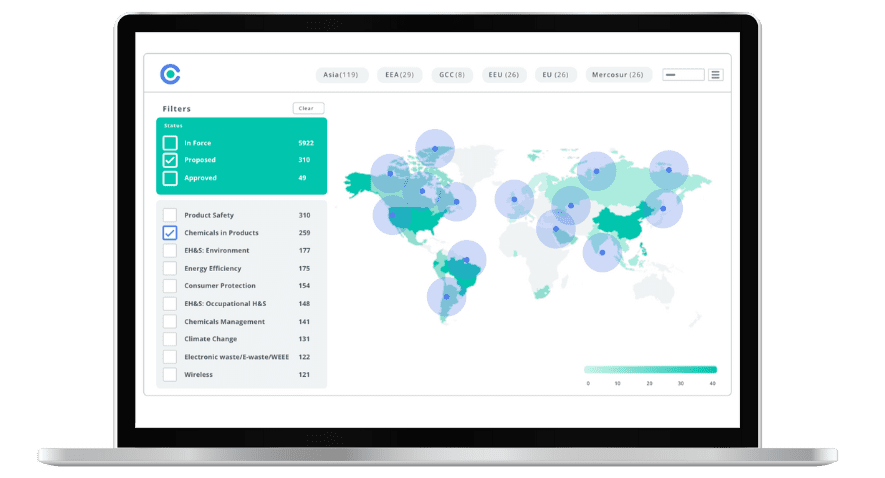
Global Packaging EPR Reporting Requirements: A Practical Comparison Guide
The global adoption of EPR systems for packaging is rapidly increasing.
Explore details compliance deadlines, report descriptions, the types of packaging within the scope of reporting obligations, and exemptions for certain producers.
